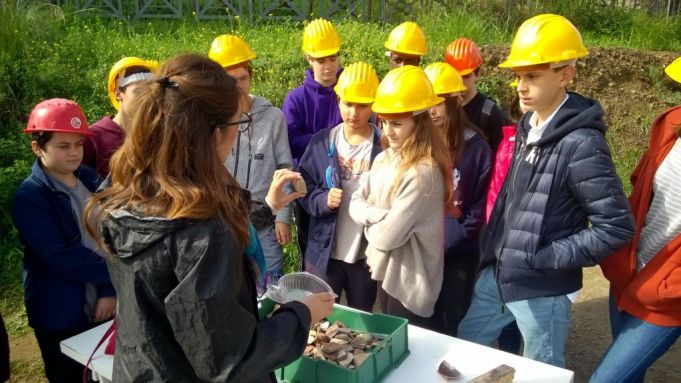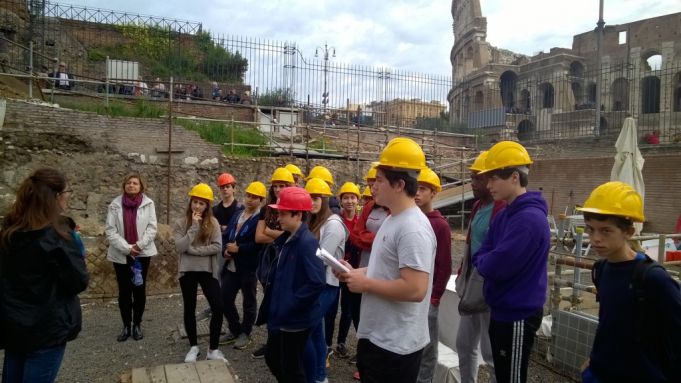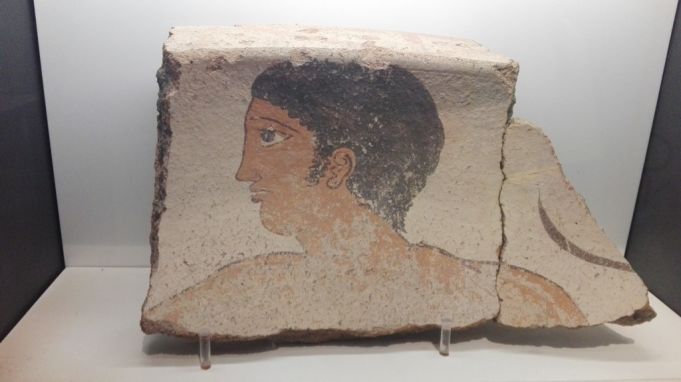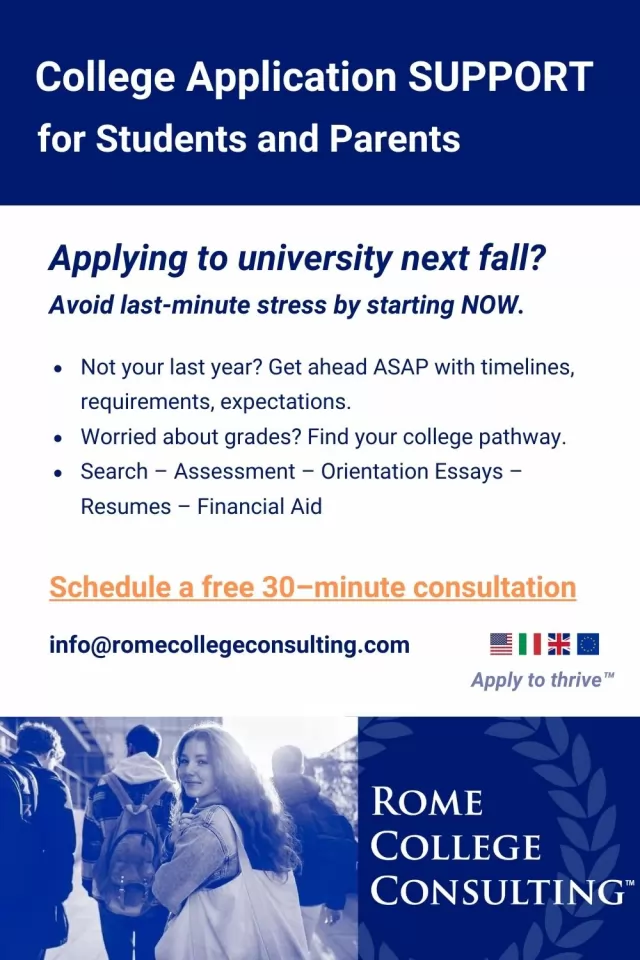Eternal footprints from Romulus’ huts to today’s sneakers: St Stephen’s first-hand experience in the preservation of Rome’s cultural heritage at the Palatine excavations.
James Hua, aged 17, St Stephen’s School of Rome.
Scraping. Gathering the sediment together. Divining as an oracle. Oozing, squishing through the mud. Scraping. Gathering the sediment – crunch. A low, rich dong sounded from the shovel the archaeologist was using. Glides the mud from the artefact, and what shines beneath was mud compared to the radiance that burst from the archaeologist’s face.
The La Sapienza University’s excavations between the northeast of the Palatine hill and the valley of the Colosseum is most remarkable in the modern generation’s role and influence. It is the down-to-earth students of archaeology who enthusiastically excavate the site today, not some wildly illusionary professor like Schliemann. This change has brought about its own techniques and skills to all facets of the excavation. The students light-heartedly joked about the first-ever example of Roman painting actually found in Rome (a black-haired youth on a bowl’s inside, see below).
Ancient and modern city
The fourth-century AD spa must have looked just like what modern tourists do in Rome at the heat of summer; the fascinating shifts in the stratigraphy from mediaeval times to Julius Caesar must be just like what future generations will be shocked by when they see the potholes in Rome’s roads (over its ancient roads, too). At the very heart of the ancient and modern city, it was a bustling place where activity never ceased, and never would. We can connect with it.
It made me stop for a while and listen to the adagio of the excavator’s tool. We are just one of the people in the waves of history that the Palatine has seen, coming and going, each nicking a vase or two, and leaving. I felt at a loss. What are we to it? What can we do to leave a positive impact? Imagine what it must be like for the scorned Curiae Veteres. Sure, it had its petty rivalries with the Domus Aurea, but in the end they suffered the same neglect by self-deceptive, greedy “tourists”. The forum breathed down its rustic winds, and it was silent. The answer was right in front of me.
Roma Antiqua
Appreciating our shared cultural heritage is feeling the awe that right underneath our feet, as we rush to the metro or relax with our coffee, lie some of the most antique, significant remains of Roma Antiqua. Our cultural heritage, the priceless tangible remains and intangible traditions of the past that have made us who we are today, at the Palatine, have spanned the whole history of Rome. In our blood we do have the eloquence of Cicero, in our soul we do have the warlike impulses of Romulus. Just as the hopes of Rome always lay in its youth, so does it with ours today.

The students inserted one or two cheeky anecdotes while they talked with the serious visages of sagacious archaeologists. They let you try it out. They want to make archaeology for everyone, everyone to feel a connection with the ancient world. It is no longer a special group’s snobbery: it is our history. By rekindling the love for our cultural heritage in the people of today, we can constantly bring together more innovative, efficient ways to touch and document the walls of the emperors. We can complement the “next-generation materials and technologies” that we students are so apt in, with the traditional, experienced methodology, to allow us to cross our “bridge” with the past. This is the time to revitalise the Classics and apply our ever-expanding technology for discoveries and paradigm shifts. With each new step, we can connect with our prisca gens mortalium, our ancestors, and doing so, discover ourselves.
Funding Rome's historical sites
Alas; how to leave our mark? Unlike any time in our history have awareness and opportunities for preservation sprung up. Crowdfunding and private sponsorship are permeating the universities and institutes of Rome, promoting the preservation of remains for future generations. As the government’s treasuries dry up, Rome’s historical sites can no longer rely on funds and equipment. It’s a very real threat to our understanding of who we are. Yet we can all get involved in private funding such as through LoveItaly!, which sponsors the Palatine excavations.

When Tod’s funded the restoration for the Colosseum, Fendi the Trevi Fountain and Bulgari the Spanish Steps, St Stephen’s School fundraised for the Palatine excavations in a mock-chariot race at the Circus Maximus on 30 September. It was calculatingly perfect to unveil the mystic hues of Rome: using our Aventine environ, we raced along the spina three times in a relay race. The palatium of the patricians and emperors soared to our right, the council of the plebeians and foreigners to our left, and in the middle, we, the unifying link between Ancient Rome and Rome today, vied for glory. It brings both a spirit of unification and service; it magnifies our gratitude to life and the fascinating interconnection of history.
Preserving Rome's ancient heritage
These possibilities are the building blocks for the foundations of our future: education. Preservation is more than ever à la mode in archaeology. At the British School at Rome, the Fondo Ambiente Italiano (FAI) presented crowdfunding schemes on sites ancient and modern: the Villa Gregoriana, the Parco Archeologico di Ostia, by professors from Cambridge to Rome. It is vital that we educate the future generation about not only the essentiality of our history, but also the importance of preserving it so that all can enjoy it. St Stephen’s current project is a poetry-slam-meta-symposium, showcasing our creativity, diversity, and love for diversity. This time, it’s a stone’s throw from the Palatine to the Esquiline, where Virgil and Horace once recited, preserved and reinvented Greek literature in the gardens of Maecenas.
It is as exciting as it is hopeful. The past is undoubtedly the future. As I gazed from the hoary sanctuary of the founder of Rome, to its great re-founder’s birthplace, I could sense the triad. I quickly gazed down, and saw that my feet had left a dirty patch on an opus spicatum floor. Smiling, I crouched down and cleaned it up.
This article was published in the December 2016 edition of Wanted in Rome magazine.
Through LoveItaly!'s Young Ambassadors Programme some classes at St Stephen's (Art History, Roman Topography and Latin) have had the opportunity to visit the ongoing excavations on the north-east corner of the Palatine Hill. LoveItaly! is a non-profit initiative dedicated to the preservation, promotion and appreciation of Italy's unique cultural heritage. For details see website.
St Stephen's School, Via Aventina 3, www.sssrome.it.






















